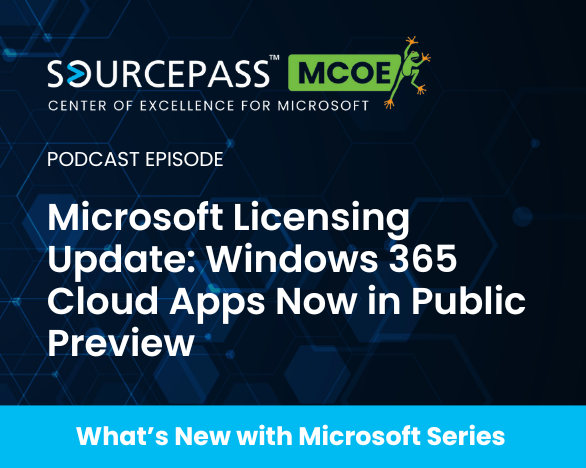6 min read
Microsoft Licensing Update: Windows 365 Cloud Apps Now in Preview
Microsoft’s Windows 365 Cloud Apps, now available in public preview, introduces a new way for organizations to deliver only the applications users...
2 min read
Keri LaRue : Jun 13, 2025 9:00:00 AM

Most IT leaders already know email is the primary attack vector. You see it every day through phishing attempts, spoofed domains, and impersonated vendors that slip past filters.
What’s changing is not just the frequency of attacks but the sophistication behind them. Threat actors are eroding trust by mimicking executives, exploiting gaps in authentication, and manipulating the signals users rely on to determine legitimacy.
The scale of the impact is measurable:
Filtering isn’t enough. Trust is the new battleground.
For a deeper dive into this shift, listen to Part 1 of our podcast series on email security where we unpack how attackers are undermining trust and what IT leaders can do about it.
For organizations on Microsoft 365, Defender for Office 365 is the baseline control. It isn’t just anti-spam; it’s tenant-level protection that integrates with Microsoft’s broader security ecosystem.
Plan 1 (included in Microsoft 365 Business Premium):
Plan 2 (included in Microsoft 365 E5 or E5 Security add-on):
Signals across identity, endpoints, and apps converge. Even if a phishing email gets through Outlook, related activity in other parts of the Microsoft ecosystem can still trigger containment.
Microsoft, Google, and Yahoo now require SPF, DKIM, and DMARC for bulk senders. This is not theoretical. Misconfigured or missing records will block legitimate business email.
By 2026, Gartner projects 90% of organizations will enforce DMARC, up from just 20% in 2023.
Email security is no longer just about filtering threats. It’s about restoring trust. As attackers evolve, defenses must evolve too. The Sourcepass Center of Excellence for Microsoft helps IT teams strengthen their Microsoft ecosystem with strategic guidance, authentication best practices, and layered protection that scales.
Whether you're auditing your domain setup or evaluating Defender capabilities, now is the time to take a closer look at how trust is built and maintained across your email infrastructure.
In Part 2, we’ll examine how attackers are using AI to scale phishing campaigns and how Microsoft is responding with its own machine learning. Parts 3 and 4 will explore advanced authentication methods like MTA-STS and BIMI, and how to align email security with a Microsoft-powered defense-in-depth strategy.

6 min read
Microsoft’s Windows 365 Cloud Apps, now available in public preview, introduces a new way for organizations to deliver only the applications users...

5 min read
Microsoft has introduced a combined security and compliance add-on for Business Premium subscribers, delivering enterprise-grade protection and...

6 min read
Microsoft Purview Suite for Business Premium is a compliance add-on for Microsoft 365 Business Premium that delivers enterprise-grade data...

Attackers don’t just target users anymore. They exploit the gaps in the infrastructure that moves email across the internet. Encryption in transit...

Email remains one of the most common ways attackers gain access to organizations. DNS, SPF, DKIM, and DMARC serve as identity checks that verify...

Hybrid IT has evolved from a transitional model into a long-term strategy. What began as a way to bridge on-premises infrastructure with emerging...